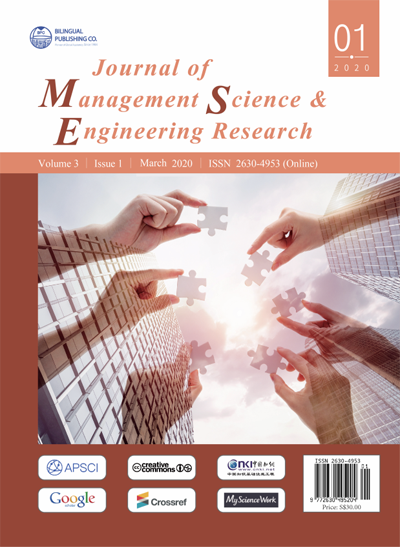-
5450
-
917
-
416
-
397
-
391
Transient Simulation on Dynamic Response of Liquid Annular Seals
DOI:
https://doi.org/10.30564/jmser.v3i1.2597Abstract
Transient change of the operating parameters has a serious influence on the stability of liquid annular seals. Take the liquid annular seals as a research object, a numerical method based on six-degree-of-freedom (6DOF) to analyze the dynamic response of liquid annular seals under gravity impact load. The variations of the force of liquid seal and pressure as well as the axis trajectory in time history are investigated. The influence of different sealing clearance, different liquid viscosity and different rotor speed is also studied. The results show that the maximum sealing pressure and sealing force of gravity direction will increase greatly in a very short time and then reduce rapidly. When sealing clearance increases, the displacement response amplitudes of axis trajectory, the maximum sealing force of gravity direction and maximum sealing pressure also increase. When liquid viscosity increases, the displacement response am plitudes of axis trajectory, the maximum sealing force of gravity direction and maximum sealing pressure decrease. We also found that different rotor speed has almost no influence on the maximum sealing force of gravity direction and maximum sealing pressure.
Keywords:
Annular seals; Transient impact load; 6DOF; Axis trajectory; Seal pressureReferences
[1] M. Arghir, J. Frene. Static and dynamic analysis of annular seals, Proc. of ASME Fluids Engineering Division Summer Meeting 2006, Miami, FL, USA. 2006: 517-526.
[2] Wenjie Zhou, Ning Qiu, Leqin Wang, et al. Dynamic analysis of a planar multi-stage centrifugal pump rotor system based on a novel coupled model[J]. Journal of Sound and Vibration, 2018, 434: 237-260.
[3] Congxin Yang, Pan Qiang, Sha An, et al. Effects of wear-ring clearance on performance of high-speed centrifugal pump[J]. Journal of drainage and irrigation machinery engineering, 2017, 35(1): 18-24. (in Chinese)
[4] Yan X., He K., Li J., et al. Nemerical techniques for computing nonlinear dynamic characteristics of rotor-seal system[J]. Journal of Mechanical Science and Technology, 2014, 28(5): 1727-1740.
[5] Jinkui Ma, Changhou Lu, Shujiang Chen. Simulation of Journal Centre Trajectories of Hydrodynamic Journal Bearing Under Transient Loads[J]. Journal of vibration, Measurement & Diagnosis, 2010, 30(1): 6-10. (in Chinese)
[6] Rao T, Biswas S, Hirani H, et al. An analytical approach to evaluate dynamic coefficients and nonlinear transient analysis of an hydrodynamic journal bearing[J]. Tribology transactions, 2000, 43(1): 109- 115.
[7] Tichy J, Bou-Said B. Hydrodynamic lubrication and bearing behavior with impulsive loads[J]. Tribology Transactions, 1991, 34(4): 505-512.
[8] Zhen Li, Chnaglin Gui, Zhiyuan Li, et al. Study on Dynamic Behaviors of Variably-loaded Shaft-bearing System[J]. Machine design and Research, 2005, 21(1): 12-16. (in Chinese)
[9] Yan X., He K., Li J., Feng Z. P. A Generalized Prediction Method for Rotor dynamic Coecients of Annular Gas Seals. J. Eng. Gas Turbines Power, 2015, 13: 092506.
[10] ANSYS fluent 20.0 Theory Guide, ANSYS Inc., USA, 2019.




 Li Song
Li Song





